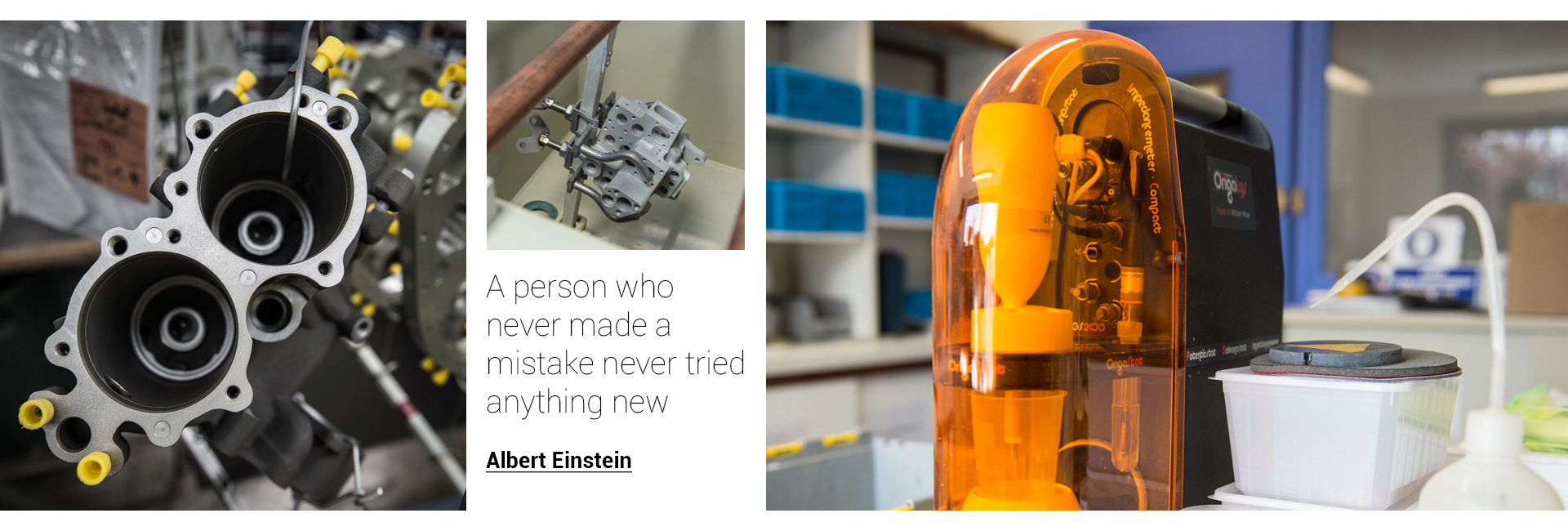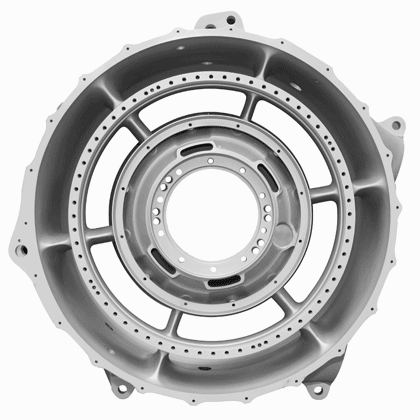R&D: AÉROPROTEC’s FLAGSHIP ASSET
The R&D hub was created in 2012 in response to the radical changes in the surface treatment profession induced by the European REACH Directive, and is currently staffed by a team of four. The Directive lists the chemical substances present on the European economic market and evaluates them so that their usage can be either authorized or restricted to specific industrial players. “In our activity, 90% of processes – oxidation, metal deposits, chemical conversion coating and paint – are affected by the Directive, all of them except for NDT in fact,” explains Sylvain Amand, doctor in materials science and R&D manager of the group.
“We must therefore get ready for the Sunset date, which is when old processes will become obsolete, and make sure that we stand out from the crowd with a determined, unique innovation and research strategy,” adds Sylvain Amand.
A FUTURE MADE OF NANOTECHNOLOGIES
In practice, this means implementing substitution processes selected by the R&D hub: laboratory tests followed by a pilot chain for the transition to industrial application, and background work to standardize processes. In line with this aim, AÉROPROTEC is an active member of the R&D commission of the GIFAS (French aerospace industries association).
R&D is also focusing on other areas of research, such as the replacement of trivalent chromium and a project to develop an electrochemical process simulation software. The latter is partly financed by the Region, and its aim is to achieve optimum standardized current conditions in order to propose tailor-made solutions in production activities. The objective is to use the results of this research in production within the next two years.
Finally, an industrial partnership with Naomarq, belonging to the ALCEN group, aims to introduce nanometric particles into parts in order to authenticate them and improve product traceability in the future. Here again, there is a lot at stake, including replacement of hazardous materials and reduction of the non-compliance rate.
Positioned at the cutting-edge of technical and economic changes, AÉROPROTEC R&D is proactively building its future.
search facilities
Surface treatment chain at pilot scale
AÉROPROTEC has a small-scale pilot surface treatment installation (150 L) that replicates production conditions. The facility is a bridge between industrialization and the study of processes, and serves to carry out demonstrations. It is also used to train operators and to reproduce production conditions for all types of research subjects.
AÉROPROTEC has a small-scale pilot surface treatment installation (150 L) that replicates production conditions. The facility is a bridge between industrialization and the study of processes, and serves to carry out demonstrations. It is also used to train operators and to reproduce production conditions for all types of research subjects.
Electrochemical analysis laboratory
In this section of the laboratory the company can perform potentiometric analyses, cyclic voltammetry, electrochemical impedance spectroscopy and trace-element analyses using boron-doped diamond electrodes. Any type of electrode can be used to perform these measurements, including rotating disk ones. They are used to study electrolytes in order to understand the electrochemical phenomena that take place within, and to study anti-corrosion coatings (characterization of interfaces, and barrier and anti-corrosion properties). These techniques are suitable for studying electrodeposited coatings, oxidation layers, supporting electrolytes and various solvent solutions.
In this section of the laboratory the company can perform potentiometric analyses, cyclic voltammetry, electrochemical impedance spectroscopy and trace-element analyses using boron-doped diamond electrodes. Any type of electrode can be used to perform these measurements, including rotating disk ones. They are used to study electrolytes in order to understand the electrochemical phenomena that take place within, and to study anti-corrosion coatings (characterization of interfaces, and barrier and anti-corrosion properties). These techniques are suitable for studying electrodeposited coatings, oxidation layers, supporting electrolytes and various solvent solutions.
Physico-chemical analysis laboratory (titration, compleximetry, spectrophotometry, turbidity and suspended matter measurements, adhesion, roughness, impact resistance measurements, accelerated corrosion chamber). In this laboratory, aeronautical production is monitored in series and industrial waters analysed. The lab also has the capacity to study surface treatment processes at a scale of up to 20 L (chemical and electrochemical treatments).

A FEW FIGURES
2016
Evolution of the number of employees




